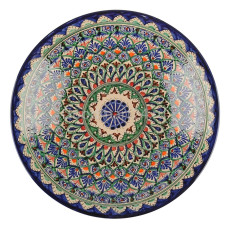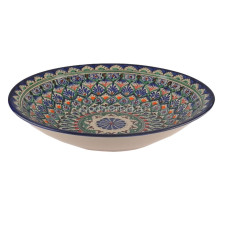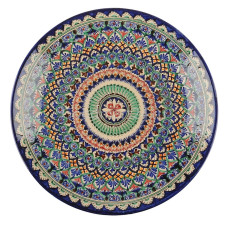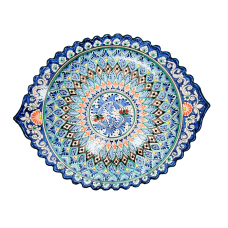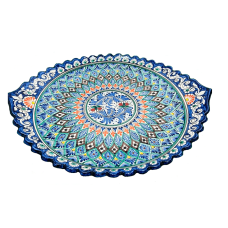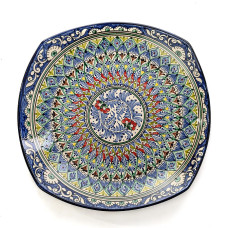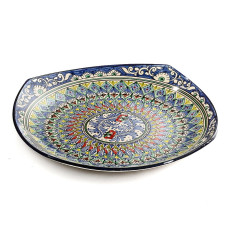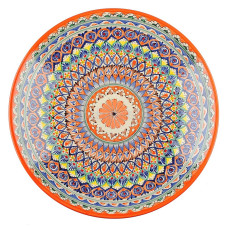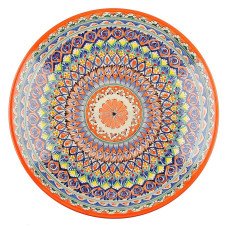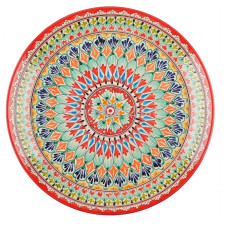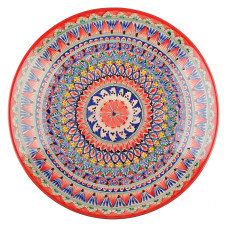0 ₽
Checkout
Traditional Uzbek tableware is popular in all Central Asian countries. Residents of Almaty and Shymkent, Bishkek and Dushanbe buy pilaf pans, second-hand bags or tea cups from Uzbek masters mainly at fairs.
There are three ways to counterfeit. The first - painting with gouache paints on engobed (engobe - liquid clay with a dye, which is applied to the product before the first firing. - "Italic") surface, followed by varnishing. The furniture varnish is visible at once on specific warm reflection. This product cannot be used in the kitchen.
The second way: at external qualitative list dyes which do not correspond to traditions of region are used. Rishtan ceramics are characterized by free brush strokes of turquoise, dark blue and brown paints on a thin milky-white engobe layer. Red, black, yellow and orange are not welcome. Unless for export somewhere in Europe. Masters of Khorezm with their sky-blue products, Gijduvan ceramists following the traditional green-brown scale, as well as Samarkand potters with their unique bright blue irrigated ceramics with black ornaments will not accept red at all.
The third way is to use a Chinese decal made in China (or somewhere else). We are talking about special transfer pictures, which are applied to the glazed surface of the product, followed by firing at a temperature of 200-300 degrees Celsius. Decal looks, of course, spectacular. But also erases quickly enough: at constant use of a ceramic product the drawing on it in a year loses former freshness. It is easy to distinguish the decal from the traditional for Uzbek ceramics underglaze drawing. It is enough to look at a surface of a lagan or a bag at an angle to light. Decolle gives, albeit inconspicuous, but relief.

